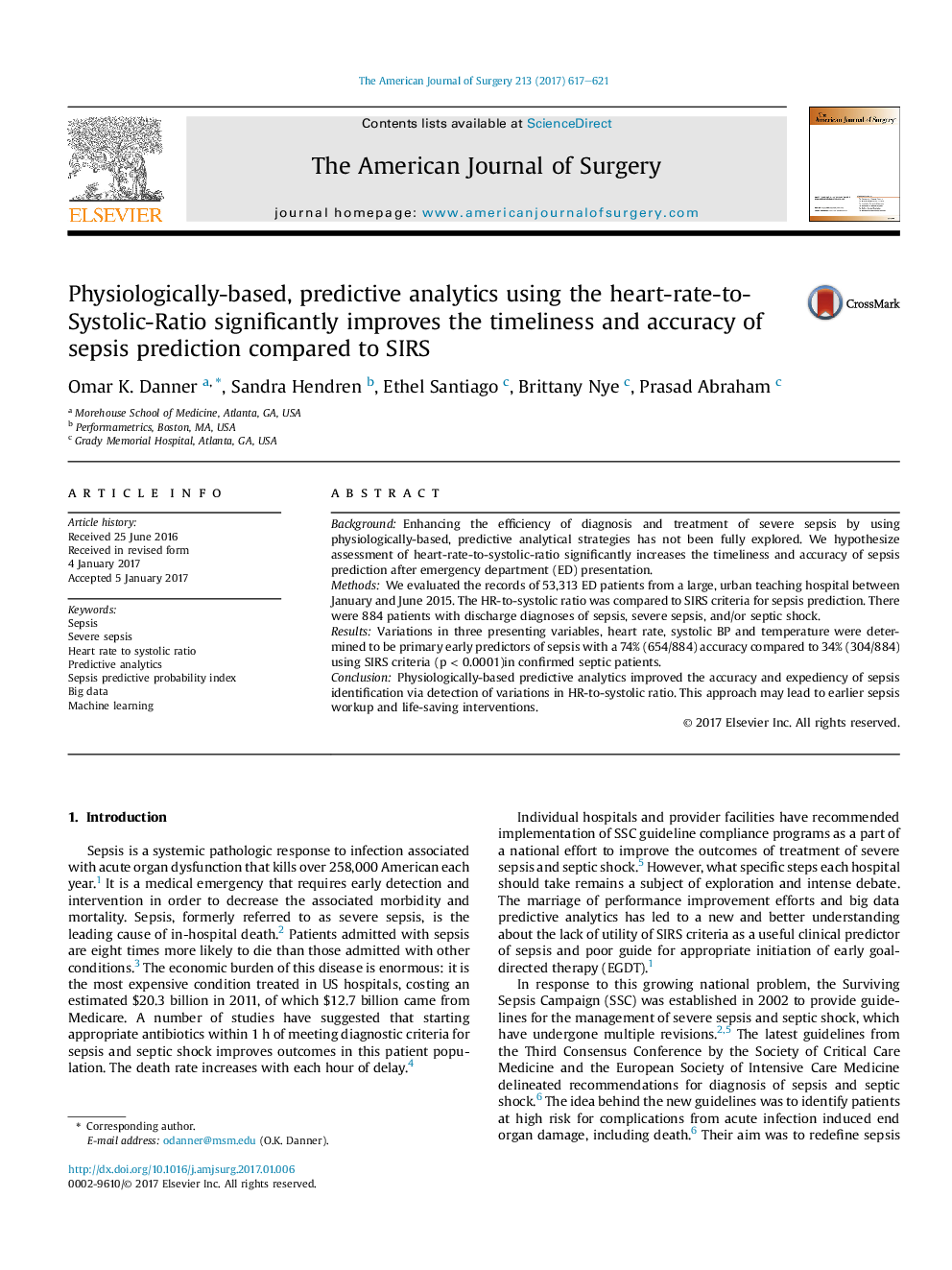| Article ID | Journal | Published Year | Pages | File Type |
|---|---|---|---|---|
| 5731284 | The American Journal of Surgery | 2017 | 5 Pages |
BackgroundEnhancing the efficiency of diagnosis and treatment of severe sepsis by using physiologically-based, predictive analytical strategies has not been fully explored. We hypothesize assessment of heart-rate-to-systolic-ratio significantly increases the timeliness and accuracy of sepsis prediction after emergency department (ED) presentation.MethodsWe evaluated the records of 53,313 ED patients from a large, urban teaching hospital between January and June 2015. The HR-to-systolic ratio was compared to SIRS criteria for sepsis prediction. There were 884 patients with discharge diagnoses of sepsis, severe sepsis, and/or septic shock.ResultsVariations in three presenting variables, heart rate, systolic BP and temperature were determined to be primary early predictors of sepsis with a 74% (654/884) accuracy compared to 34% (304/884) using SIRS criteria (p < 0.0001)in confirmed septic patients.ConclusionPhysiologically-based predictive analytics improved the accuracy and expediency of sepsis identification via detection of variations in HR-to-systolic ratio. This approach may lead to earlier sepsis workup and life-saving interventions.
